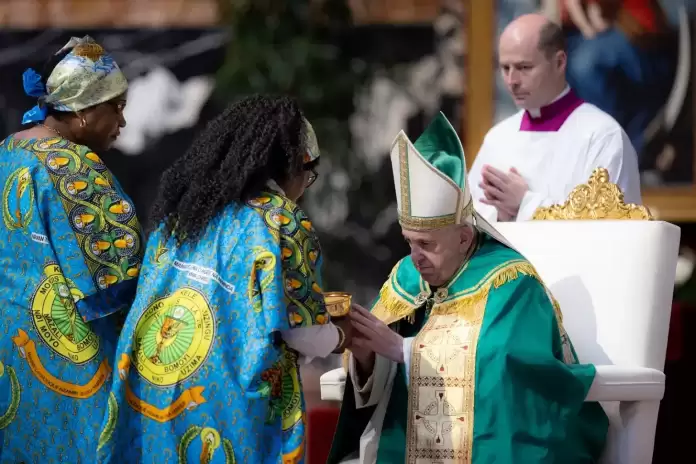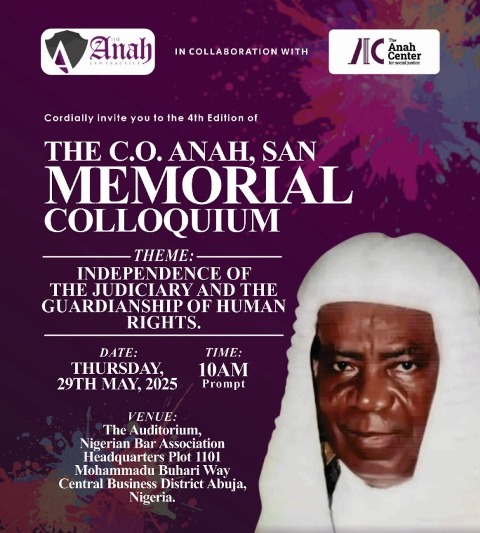The beloved pontiff who embraced Africa’s vibrant Catholicism left behind a strong legacy on a continent that is the Church’s future and present.
Unless you have been in hibernation until recently, you are likely aware that Pope Francis died last month. His death was not especially surprising, as he was 88 years old and in poor health for the better part of the past five years.
In February, his condition took a dramatic turn for the worse when he was hospitalized with bronchitis. During Francis’ admission, Catholics around the world devoted Masses and prayers to the pontiff. He was discharged from the hospital in late March amid reports of a gradual improvement of his condition, but there was a polite, unstated acknowledgment among Catholics and non-Catholics alike that his end was nigh.
The seeming imminence of Francis’ death did not make it any less weighty when it eventually happened. His passing and subsequent burial was followed by an outpouring of condolence, and evaluation of his leadership of the world’s largest Christian church.
Perhaps the most significant part of Francis’ legacy was his effort to bring the Catholic Church into closer communion with the non-Western world, where most of its adherents reside.
In Africa, whose Catholic population is commonly said to be the fastest growing in the world, Francis’ papacy was consequential in more ways than statistics would indicate. It did not escape me that his death came nearly 20 years after that of his predecessor, John Paul II, who retains an iconic status among African Catholics for overseeing the most significant expansion of Catholicism on the continent.
This post is a rough summary of my reflections on Francis’ papacy, its impact on the Catholic Church in Africa and his overall effort to create a more inclusive faith.
The individual roots of my admiration of Francis
Catholics generally revere the papacy as an institution and hold whoever occupies the office in the utmost regard by virtue of being an apostolic successor to St. Peter, to whom Jesus conferred a position of preeminence among the Twelve Disciples in the Bible’s New Testament. None of this diminishes the special fondness I had for Francis, who was the third pontiff of my lifetime.
It began with the fact that he shared his papal name with an uncle who is a senior priest in the Archdiocese of Lagos in Nigeria. Like the late pope, my uncle has earned a reputation for humility, disciplinarianism and commitment to the downtrodden, in keeping with the example set by St. Francis of Assisi, the 13th century friar after whom they were both named.
The immense affection I have always had for my uncle led me to the seminary — the same one he attended and later served as its vice-rector — where I spent five years in preparation to join him in the priestly vocation. I was keen to enter a religious order like the Missionary Society of St. Paul; a mendicant organization like the Franciscan Order and the Order of St. Augustine, a society created to honor the North African saint whose name I took for the sacrament of Confirmation; or the Society of Jesus — better known as the Jesuits — which Francis famously belonged to and became the first of its members to become pope.
While my plan to become a man of the cloth did not materialize, the admiration I had for the commitment of these orders to ministry, scholarship and serving the less privileged did not waver. The rise to the papacy of a prelate who was the kind of cleric I hoped to be immensely endeared Francis to me.
As a lifelong adherent of Catholic Social Teaching and one whose political views could be classified as socialist, I appreciated Francis’ critiques of free-market fundamentalism and his outspoken commentary on issues like poverty, migration and ecology. Francis’ papacy was defined by a Christ-like compassion for and solidarity with the most vulnerable “outcasts,” whether they were migrants and refugees seeking sanctuary in foreign lands, internally displaced victims of war, transgender sex workers or incarcerated inmates. In his final public appearance, he called for a ceasefire in Israel’s latest war in Gaza and we learned that he made daily calls to the only Catholic Church in Gaza until his death.
These gestures were not symbolic or contrived, but were acts rooted in his unyielding belief in the humanity of every human being as well as what he saw as his mission to proclaim the good news of the Gospel. Francis’ death on Easter Monday — the second day of the Eastertide which follows Lent — one day after making what turned out to be his final public appearance on Easter Sunday struck me like a glorious transition that symbolized his completion of what John Paul II described in his apostolic letter Salvifici Doloris as the share of every human in the redemptive suffering of Jesus Christ.
Ghana as a symbol of the “Pentecostal factor” that animated Francis’ agenda in Africa
According to the Vatican, the number of Catholics in Africa grew from 176 million at the beginning of Francis’ papacy to approximately 281 million when he died. In addition, one in five of the world’s Catholics lives in Africa. On a continent where churchgoing and other forms of religious practice are high, the Church’s dynamic growth has led many to declare that Africa is Catholicism’s future—and its present.
On April 25, the day before Francis’ funeral, I joined a congregation of Catholics who assembled at the Holy Spirit Cathedral in Accra, Ghana for a requiem Mass honoring the late pontiff. The ceremony brought together government officials, religious leaders and lay Catholics from across the country. Ghanaian Foreign Minister Samuel Ablakwa, who led the government’s delegation, spoke at the gathering and recalled Francis’ exhortation for an end to the continent’s economic exploitation by foreign powers.
In many ways, Ghana is symbolic of many contemporary trends in African Catholicism, most of which predated Francis’ papacy and with which he sought to engage. According to data from the 2021 census, 10% of Ghana’s population identifies as Catholic. This makes Catholicism the second-largest Christian denomination in Ghana, and the largest among the so-called historic missionary churches.
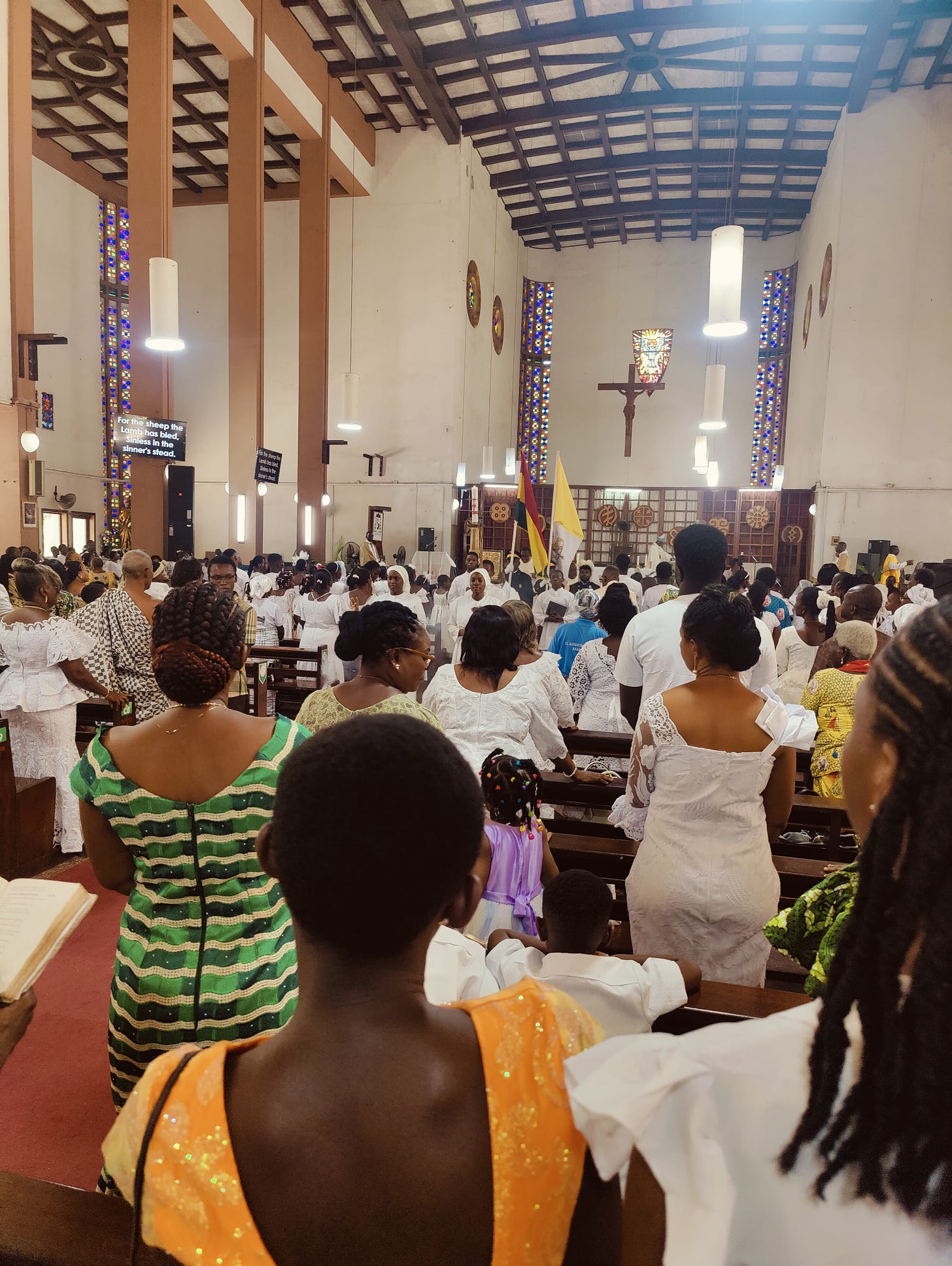
However, the percentage of self-identifying Catholics in Ghana has been on a downward trajectory for some time, falling from 15% in the 2000 census to the 10% figure identified in the 2021 census. For good measure, one of the names generating buzz amid speculation about who will succeed Francis is Cardinal Peter Turkson, a Ghanaian prelate who is widely respected among different factions in the Vatican.
In recent years, Catholic bishops in Ghana have expressed concern about the declining number of Catholics in the country, many of whom have defected to the Pentecostal and Charismatic churches whose proliferation has dramatically altered the religious landscape in Africa.
Those fears have been echoed elsewhere like Congo-Brazzaville, where a leading archbishop described Pentecostal churches as waging a “guerrilla war” on the Catholic Church. Although the Catholic Church is the single largest Christian denomination on the continent, Pentecostalism is believed to be growing at a faster clip and has overtaken Catholicism as the largest Christian denomination in many African countries including Ghana.
The reasons for the remarkable growth of Pentecostalism in Africa vary from country to country and continue to be debated, but they generally have to do with a combination of demographic changes, technological advancements, sociopolitical factors and shifts on the continent away from missionary-led inculcation and toward an Africanized form of Christianity that resonates with “indigenous” worldviews.
The role Francis played in the growth of Catholicism in Africa
In Evangelii gaudium, a document Francis released in the first year of his papacy as a blueprint of sorts, he wrote extensively about the challenges Catholicism faced around the world including some of the factors mentioned above. In one excerpt, he wrote that the Catholic faith was being challenged “by the proliferation of new religious movements” and called for “an evangelization capable of shedding light on [these] new ways of relating to God.”
Francis launched the Synod on Synodality, a process of reforms that, if ratified, would bring the most sweeping changes to the Catholic Church since the Second Vatican Council. Many of the reforms Francis implemented during his pontificate were contextually relevant to conditions in Africa. “Faith must be inculturated and culture must be evangelized,” he once said, underscoring his belief in the importance of a Catholic faith that was tailored to the experience of its adherents.
On a number of occasions like the commemoration of the 25th anniversary of the Congolese Catholic Chaplaincy in Rome, Francis administered Mass using the Zairean Rite, a version of the Catholic Church’s traditional Roman Rite that was approved in the 1980s for dioceses in what was then known as Zaire, now called the Democratic Republic of Congo. He regularly cited the rite as a model for inculturation of Catholic liturgy across the world.
Francis appointed 19 African cardinals during his papacy, most of whom will take part in the conclave that will choose his successor. His willingness to entertain the possibility of revising the Catholic Church’s longstanding practice of clerical celibacy in order to address a shortage of priests was pragmatic from the prism of a continent where many adopt a “don’t ask, don’t tell” attitude toward the covert but far from anomalous notion of Catholic priests who are non-celibate and non-chaste.
Francis’ visits to the African continent were among my fondest memories of his papacy. He visited 10 African countries in total including Kenya, Uganda, Central African Republic, Mozambique and Congo. He selected his destinations to emphasize the themes he advocated like interfaith dialogue and poverty and to raise international awareness about devastating conflicts, as in the case of Central African Republic and Congo. I wrote about Francis’ visit to Congo in 2023, and you can read that piece here.
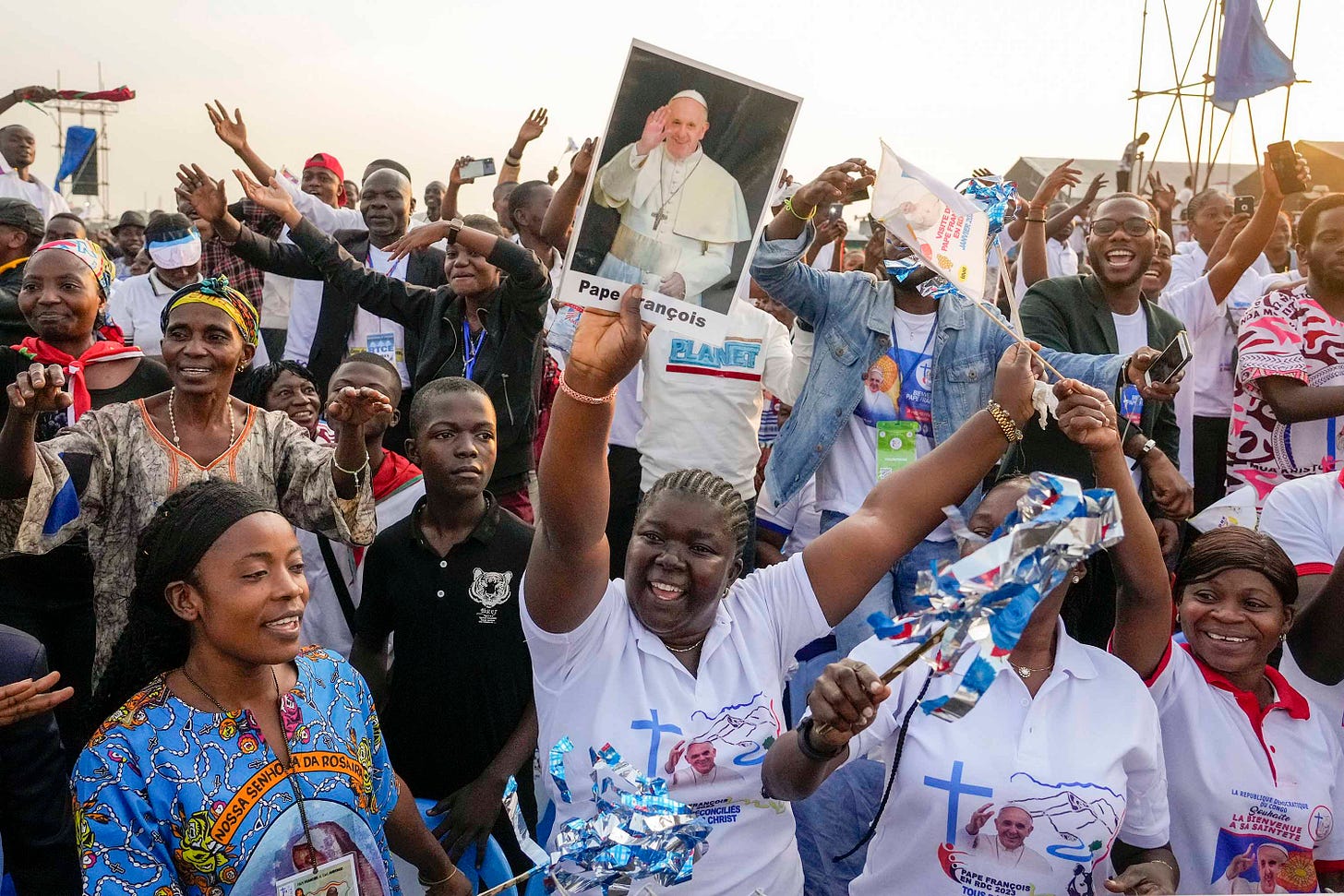
Unlike many visiting foreign dignitaries to African countries whose appointments are limited to meetings with local elites and urban professionals, Francis went out of his way to include the poor, victims of war and other socially disadvantaged people in his agenda. Those engagements were devoid of the “slum tourism” by outsiders that is all too common on the continent. Indeed, their common denominator was Francis’ unfailing ability to humanize the people he met, his rebuke of the structural factors that brought out their material conditions and unequivocal calls for powerful elites to change the status quo.
Francis’ engagement with Africa was not always an unqualified success. His effort to reduce clericalism in the Catholic Church flopped on a continent where clergymen retain saintlike authority and the Church as an entity has more capacity and legitimacy in many places than formal state institutions. The idea of female Catholic priests that he ruled out during his papacy but considered a possibility in the future is not widely shared on the continent including by many Catholic women.
Francis’ approval of Fiducia Supplicans, a declaration by the Dicastery for the Doctrine of the Faith — the department in the Roman Curia responsible for enforcing Catholic beliefs — that created the possibility for priests to bless same-sex couples, created a firestorm in African dioceses that is still talked about to this day.
Cardinal Fridolin Ambongo Besungu, a Francis ally who is the archbishop of Kinshasa and the president of the collective body of Africa’s Catholic bishops, spearheaded their rebellion against the declaration. The strong pushback compelled the Vatican to issue a rare “clarification” of its position and essentially forced Rome to affirm the right of local bishops to implement the guidance as they saw fit, including prohibiting the imparting of blessings on same-sex couples.
In media outlets, on WhatsApp and other social media platforms as well as in parishes across the continent, the objection of many African Catholics to Francis’ permissive attitude toward LGBTQ rights was one that I regularly encountered during his papacy, and they saw his inclusivity on the issue as another example of what many on the continent have long viewed as an imposition of Western values on African societies.
Notwithstanding the daylight between Francis and many African Catholics on LGBTQ rights and other cultural issues, he was a beloved figure whose advocacy for the downtrodden and embrace of the continent earned him the affection of millions of Africans, Catholics and non-Catholics alike. While Francis’ popularity in Africa never quite reached the high-water mark of John Paul II (a topic for a future post), he will likely be remembered fondly for the steps he took to position Africa in his vision of Catholicism’s future.
What is the future of the Catholic Church?
The process to select Francis’ successor is expected to begin this week. The possibility of the first African pope of the modern era has been a regular topic of discussion for as long as I can remember and has reemerged ahead of the upcoming conclave. The names of several African cardinals have made the rounds in the ongoing speculation including that of Turkson, Ambongo and Guinea’s Robert Sarah.
I have been asked several times in the recent weeks who I think will be the next pope and whether he will be African. My honest answer is that I have no idea, given how notoriously secretive and opaque papal conclaves tend to be. I would not be all that surprised if an Italian cardinal was selected, given the considerable clamor for the papacy to “return” to the nation that has produced 80% of the Church’s popes but none since John Paul I in 1978.
Regardless of who succeeds Francis, the next pope will have big shoes to fill. He will be faced with the task of leading a Church that is different today from what it was when they were ordained as a priest. While watching Francis’ funeral, I was reminded of several things that underscored the significance of his papacy.
For one, I realized that I’d sometimes taken for granted that a pope is still a remarkably influential global figure who commands a great deal of authority. I was struck by how many people — a good number of them non-Catholics and even non-believers — reached out to me to offer their commiserations after Francis’ passing, which spoke to the virtue of a man who appealed to all kinds of people. Secondly, the unmistakably Eurocentric — and specifically Italocentric — institutional culture of the Catholic Church is deeply woven into its fabric in ways that will take some undoing despite Catholicism’s changing demographics.
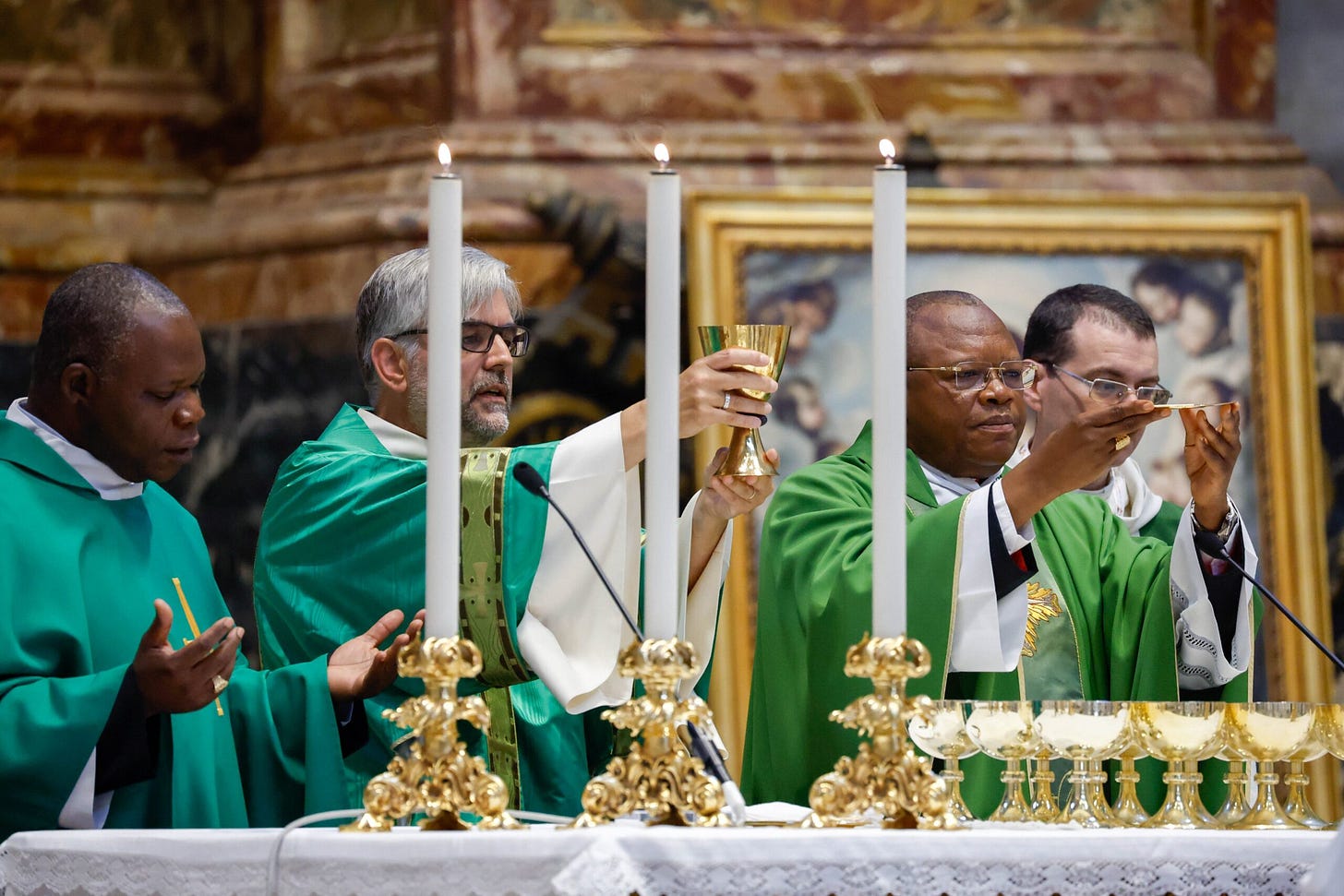
The child sexual abuse scandal cast a shadow over Francis’ papacy, and his inability to take firmer action against those who were complicit in the culture of abuse was a major failure. The next pope must be willing to make unpopular but necessary choices that might potentially rope in some close allies but will go a long way in bringing justice to victims.
Another reform that is sorely needed despite my suspicion that it is an unpopular opinion is the question of papal term limits. It is not a particularly novel idea and has been discussed decades before, but its urgency has come into sharper focus.
The Catholic Church is bigger, more far-reaching and complex today than it has ever been. Its leaders including the pontiff need all the vigor in the world and if the Church is to adapt to the modern world, it cannot afford to have vacuums due to the incapacitation of its stewards.
The pope should be mandated to retire at the age of 80 while bishops and cardinals should do so at 70. The latter category of prelates should lose their eligibility to be electors in a papal conclave at 75, the age at which they were previously required to retire.
This might invariably mean that the episcopacy as a whole needs to be younger, which would be more than welcome and was common in Africa and other parts of the Global South in the 20th century, when the first wave of “indigenous” priests and bishops emerged. Catholics must get used to the idea of an ex-pope that Benedict XVI set as a modern precedent, and it should not take another 600 years before the next papal resignation.
As for the Catholic Church in Africa, it will probably continue to grow at a significant pace. It is the largest non-governmental provider of many vital social services like education, health care, humanitarian services, election integrity, peacebuilding and skills acquisition, and the Church’s continued growth is strongly linked to its embeddedness in African societies. However, the “competition” from Pentecostalism is unlikely to diminish anytime soon.
The next pope should not view that challenge as a zero-sum game but instead embrace it as part of the “apostolic zeal” that Francis described as a measure of the Catholic Church’s spiritual health. If millions of Africans including Catholics are turning toward Pentecostal churches, it is because it fulfills a need in their lives above and beyond a yearning for financial prosperity, as some critics simplistically argue.
Across the continent, the Catholic Church is a revered institution that many have great expectations of and which it evidently does not always succeed at meeting. It must find a way to renew its relevance to those who believe it is unconnected to their contemporary priorities or a relic of the past. Like many other African Catholics, I shall pray for the next pope and wish him well in his leadership of a Church we hold dear in our hearts.
Culled from Coogonmodede.substack

